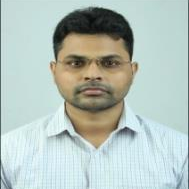International Journal of Image, Graphics and Signal Processing (IJIGSP)
IJIGSP Vol. 15, No. 1, 8 Feb. 2023
Cover page and Table of Contents: PDF (size: 1082KB)
Detecting the Third Heart Sound: Separation and Localization from Lung Sound using Intrinsic Time Scale Decomposition
Full Text (PDF, 1082KB), PP.23-35
Views: 0 Downloads: 0
Author(s)
Index Terms
Phonocardiogram signal, intrinsic time scale decomposition, smoothed pseudo-Wigner Ville distribution, localization of heart sound.
Abstract
The extraction of heart sound component from a composite signal of heart and lung is a quite challenging task in phonocardiogram signal analysis the first heart sound (S1) and the second heart sound (S2), produced by the closing of the atrioventricular valves and the closing of the semilunar valves, respectively, are the fundamental sounds of the heart. To accomplish this task a novel framework with intrinsic time scale decomposition (ITD) is designed. The capture of the PCG signal frequently hides the detection of the third heart sound (S3), which is necessary to identify cardiac failures. To separate S3, ITD method is deployed to enable signal decomposition into certain levels. Next, by applying smoothed pseudo-Wigner Ville distribution (SWVD) with reassignment, the location of S3 is detected. The proposed method is performed on 36 combinations consists of 144 cardiac cycles containing S3 obtained from different online databases. In comparison to existing approaches, the proposed work separates the S3 from other heart and lung sounds and the proposed method obtained the detection accuracy of S3 as 95.4%, which proves the superiority with other methods.
Cite This Paper
Sai Bharadwaj B, Ch. Sumanth Kumar, "Detecting the Third Heart Sound: Separation and Localization from Lung Sound using Intrinsic Time Scale Decomposition", International Journal of Image, Graphics and Signal Processing(IJIGSP), Vol.15, No.1, pp. 23-35, 2023. DOI:10.5815/ijigsp.2023.01.03
Reference
[1]Nabih-Ali, M., El-Dahshan, E.S.A. and Yahia, A.S., 2017. A review of intelligent systems for heart sound signal analysis. Journal of medical engineering & technology, 41(7), pp.553-563.
[2]Chen, J., Sun, S., Zhang, L.B., Yang, B. and Wang, W., 2021. Compressed sensing framework for heart sound acquisition in internet of medical things. IEEE Transactions on Industrial Informatics, 18(3), pp.2000-2009.
[3]Queyam, Abdullah Bin, Sharvan Kumar Pahuja, and Dilbag Singh, "Doppler ultrasound based non-invasive heart rate telemonitoring system for wellbeing assessment," International Journal of Intelligent Systems and Applications, vol. 11, no. 12, pp. 69, 2018.
[4]Nayak, S., Gourisaria, M.K., Pandey, M. and Rautaray, S.S., 2019. Heart Disease Prediction Using Frequent Item Set Mining and Classification Technique. International Journal of Information Engineering & Electronic Business, 11(6).
[5]M. El-Segaier, O. Lilja, S. Lukkarinen, L. Sörnmo, R. Sepponen, and E. Pesonen, “Computer-Based Detection and Analysis of Heart Sound and Murmur,” Annals of Biomedical Engineering, pp. 937–942, 2005.
[6]Nersi, Ruban, G. P. S. Arneja, K. Bansal, and Noel Mathew, “Heart sound analysis using lab View,” Journal of Theoretical & Applied Information Technology, pp. 1029-1033, 2012.
[7]R. Nersisson, and M. M. Noel, “Heart sound and lung sound separation algorithms: a review.” Journal of Medical Engineering & Technology, pp. 13–21, 2016.
[8]A. L. Padilla-Ortiz, and D. Ibarra, “Lung and Heart Sounds Analysis: State-of-the-Art and Future Trends,” Critical Reviews in Biomedical Engineering, pp. 33–52, 2018
[9]V. K. Iyer, P. A. Ramamoorthy, H. Fan, and Y. Ploysongsang, “Reduction of heart sounds from lung sounds by adaptive filtering,” IEEE Trans. Biomed, pp. 1141–1148, 1986.
[10]J. Gnitecki, Z. Moussavi, and H. Pasterkamp, “Recursive least square adaptive noise cancellation filtering for heart sound in lung sounds recording,” Proceedings of the 25th Annual International Conference of the IEEE Engineering in Medicine and Biology Society Mexico, pp. 2416–2419, 2004.
[11]I. Hossain, and Z. Moussavi, “An overview of heart-noise reduction of lung sound using wavelet transform based filter,” Proceedings of the 25th Annual International Conference of the IEEE Engineering in Medicine and Biology Society, pp. 458–461, 2003
[12]M. T. Pourazad, Z. Moussavi, and G. Thomas, “Heart sound cancellation from lung sound recordings using time-frequency filtering,” Medical & Biological Engineering & Computing, vol. 44, no. 3, pp. 216–225, 2006.
[13]A. Yadollahi, and Z. M. K. Moussavi, “A Robust Method for Heart Sounds Localization Using Lung Sounds Entropy,” IEEE Transactions on Biomedical Engineering, pp. 497–502,2006.
[14]A. Mondal Bhattacharya, and G. Saha, “Reduction of heart sound interference from lung sound signals using empirical mode decomposition technique,” Journal of Medical Engineering & Technology, pp. 344–353, 2011.
[15]Malihe Molaie, and Mohammad Hassan Moradi, “Heart Sound Localization in Respiratory Sounds Based on Singular Spectrum Analysis and Frequency Features,” pp. 824-832, 2015.
[16]B. Sai Bharadwaj, and Ch. Sumanth Kumar, “Classification of the Third and Fourth Heart Sounds using Intrinsic Time-Scale Decomposition and Support Vector Machine Technique,” International Journal of Innovative Technology and Exploring Engineering, pp. 1172-1177, 2019.
[17]S. Barma, B. W. Chen, W. Ji, S. Rho, C. H. Chou, and J. F. Wang, “Detection of the Third Heart Sound Based on Nonlinear Signal Decomposition and Time–Frequency Localization,” IEEE Transactions on Biomedical Engineering, pp. 1718–1727, 2016.
[18]E. Sejdic, and J. Jiang, “Comparative study of three time-frequency representations with applications to a novel correlation method,” IEEE International Conference on Acoustics, Speech, and Signal Processing, Canada, pp. 633-634, 2004.
[19]D. Kumar, P. Carvalho, M. Antunes, J. Henriques, A. S. Melo, R. Schmidt, and J. Habetha, “Third Heart Sound Detection Using Wavelet Transform-Simplicity Filter,” 29th Annual International Conference of the IEEE Engineering in Medicine and Biology Society, France, pp. 1277-1281, 2007.
[20]J. M. Stark Ammar, and Hansson-Sandsten, “Evaluation of Seven Time-Frequency Representation Algorithms Applied to Broadband Echolocation Signals,” Advances in Acoustics and Vibration, pp. 1–13, 2015.
[21]Johnston, and S. P. Collins, “Storrow AB The third heart sound for diagnosis of acute heart failure. Current Heart Failure Reports,” pp. 164–169, 2007.
[22]Zeng, Wei, et al. "A new approach for the detection of abnormal heart sound signals using TQWT, VMD and neural networks," Artificial Intelligence Review, vol. 54, no. 3, pp. 1613-1647, 2021.
[23]Altuve, Miguel, Luis Suárez, and Jeyson Ardila, "Fundamental heart sounds analysis using improved complete ensemble EMD with adaptive noise," Biocybernetics and Biomedical Engineering, vol. 40, no. 1, pp. 426-439, 2020.
[24]Haider, and Nishi Shahnaj, "Respiratory sound denoising using empirical mode decomposition, hurst analysis and spectral subtraction," Biomedical Signal Processing and Control, vol. 64, pp. 102313, 2021.
[25]B. Sangeetha, and R. Periyasamy, "Performance Metrics Analysis of Adaptive threshold Empirical Mode Decomposition Denoising method for suppression of noise in Lung sounds," 2021 Seventh International conference on Bio Signals, Images, and Instrumentation (ICBSII). IEEE, 2021.
[26]Fattahi, Davood, et al. "A Blind Filtering Framework for Noisy Neonatal Chest Sounds," IEEE Access, vol. 10, pp. 50715-50727, 2022.
[27]Elsetrønning, Andrine, et al. "On the effectiveness of signal decomposition, feature extraction and selection on lung sound classification". arXiv preprint arXiv:2012.11759 (2020).
[28]S. Raman, and B. N. Weber, “Detecting the gallop: the third heart sound and its significance,” The Medical Journal of Australia, pp. 198–199, 2017.
[29]M. G. Frei, and I. Osorio, “Intrinsic time scale decomposition: time-frequency-energy and real time filtering of non-stationary signals,” Proceedings of the Royal Society A: Mathematical. Physical and Engineering Sciences, pp. 321-342, 2006.
[30]François Auger, Patrick Flandrin, Yu-Ting Lin, Stephen Mclaughlin, Sylvain Meignen, et al., “Time Frequency Reassignment and Synchro squeezing: An overview,” IEEE Signal Processing Magazine. Institute of Electrical and Electronics Engineers, pp. 32-41, 2013.
[31]Heart and Lung Sounds Library. Available: http://solutions.3mae.ae/wps/portal/3M/en_AE/3M-Littmann-EMEA/stethoscope/littmann-learning-institute/heart-lungsounds/heart-lung-sound-library/.
[32]Heart Sounds & Murmurs, Accessed, Oct. [Online]. Available: https://depts.washington.edu/physdx/heart/demo.html
[33]A. Phinyomark, S. Thongpanja, H. Hu, P. Phukpattaranont, and C. Limsakul, “The Usefulness of Mean and Median Frequencies in Electromyography Analysis,” Computational Intelligence in Electromyography Analysis - A Perspective on Current Applications and Future Challenges, 2012.

